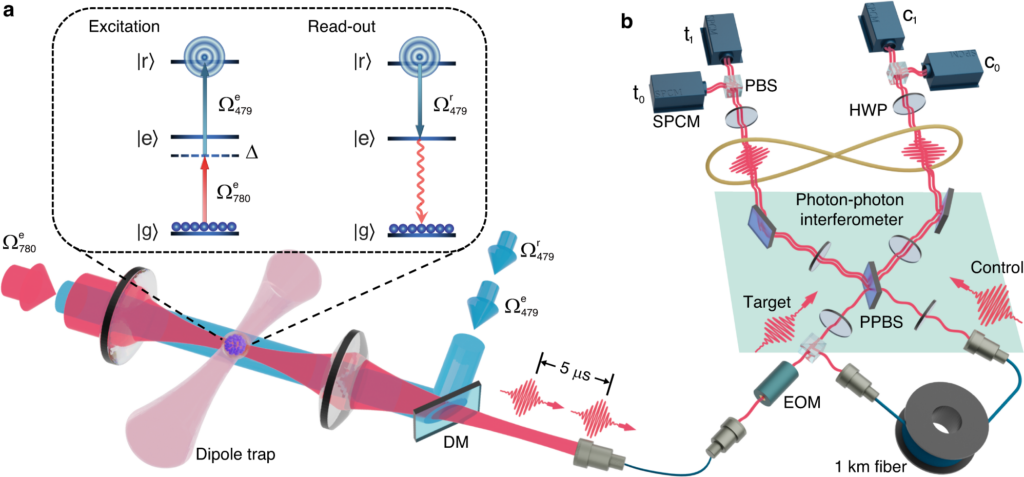A new study introduces a detailed blueprint for building a scalable, fault-tolerant photonic quantum computer using deterministic quantum dot emitters. This novel architecture integrates time-bin encoded photons, adaptive fusion gates, and a low-depth optical design to overcome the persistent challenges of photonic quantum computing, such as photon loss and inefficient entanglement generation.
At the core of the proposal is a fusion-based quantum computing (FBQC) model that performs entangling measurements on small resource states, utilizing quantum dot-based emitters capable of producing high-quality entangled photons on demand. These photons are encoded in time bins and routed through a modular optical network, significantly reducing optical complexity and hardware requirements.
The design supports real-time error correction using a foliated Floquet color code lattice, a 3D entangled photon grid that identifies and corrects errors dynamically. Adaptive “repeat-until-success” (RUS) fusion gates are a key feature, allowing retry attempts for photon entanglement until success is achieved or retry limits are reached. Simulations across noise models including photon loss, spin decoherence, and distinguishability errors confirm that the system meets essential fault-tolerance thresholds.
The blueprint is broken into three main components: quantum dot-based entangled-photon sources (EPS), fusion measurement circuits, and a classical control unit. EPS units generate chains of time-bin encoded photons entangled with electron spins. The fusion circuits direct photons into gates using switches and beam splitters for entangling operations. The classical control system coordinates real-time feedback and system synchronization across all components.
Exact hardware specifications and timing constraints including detector deadtime, spin coherence requirements, and switching speeds are outlined. While current hardware is approaching necessary thresholds, key challenges remain, such as achieving a spin coherence time exceeding 12 microseconds and photon indistinguishability over 96%.
Future directions focus on improving optical cyclicity, reducing loss through better materials like lithium niobate, enhancing spin coherence, and integrating photonic circuits onto single chips. With much of the necessary technology already demonstrated, the blueprint offers a viable path from theoretical design to practical implementation of scalable photonic quantum computing systems.

